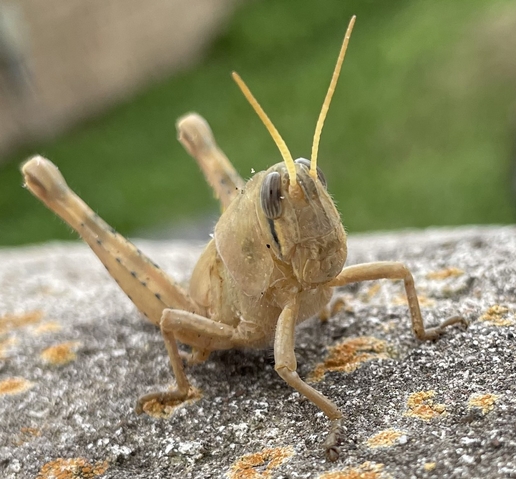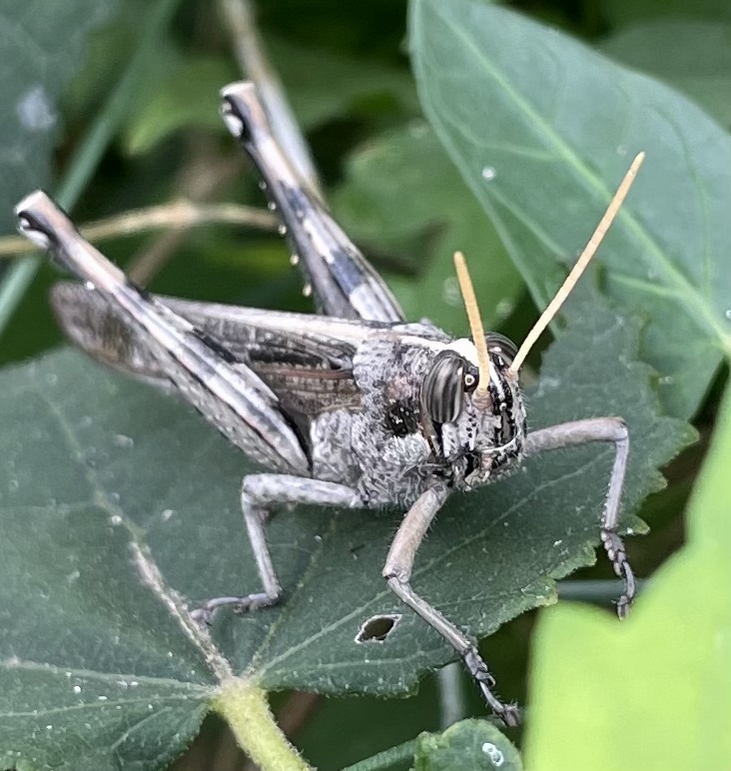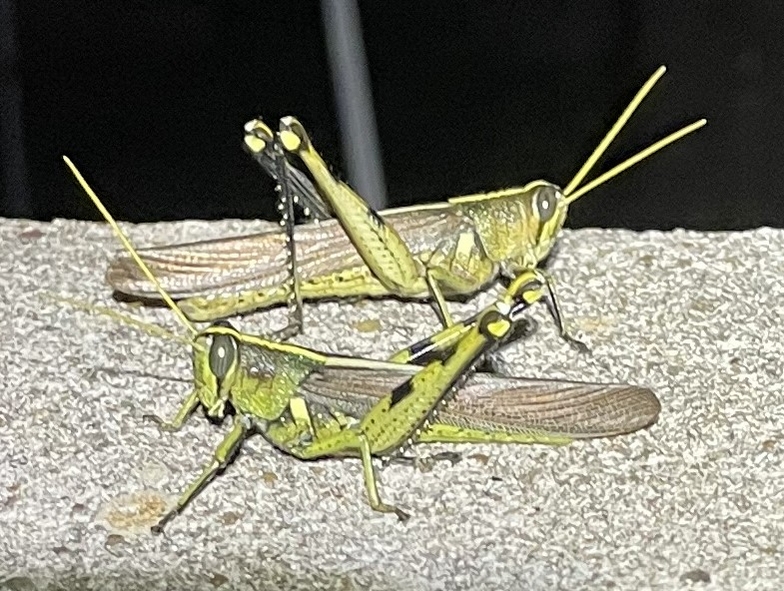I cringe every time I see a grasshopper. Sure, I’ll stop and photograph them, but then turn my back, quelling the panic that could so easily arise. Many Midwesterners recall the summer of the near defoliation in the 1990s by grasshoppers – if not the year, certainly the event.
I had a cute little cloth cat sandbag cup holder that I kept on my desk at home to hold my hot or cold drink. I came in from doing yard work one afternoon to find a large grasshopper eating away at the cloth. I have a lot of Kansas grasshopper stories all prior to the iNaturalist data base and apps on phones; I have no idea what kind of grasshoppers they were, other than destructive.
The millions of grasshoppers eating away at southeast Kansas flora weren’t quite the plague of biblical proportion, although damaging, but this story is about a couple of grasshoppers found locally and ones that don’t precipitate that sort of fear — well, not so much, anyway.
Bird grasshoppers are in the genus Schistocerca. They are called bird grasshoppers because they are strong fliers and can fly over long distances, and yes, they also do that startling spring-jump that only grasshoppers can do. Bird grasshoppers have quite a coast-to-coast range, and they eat a wide variety of plant matter. Many of them can swarm like locusts, but BugGuide.net offers that they are “much less prone to swarming behavior.”

These grasshoppers are sometimes quite large, up to nearly four inches when idle. Their coloring blends with grasses and stems; food crops are a food source for bird grasshoppers, as are ornamental garden plants, shrubs and trees. “They can be pests in large numbers, but in North America their impact does not devastate,” according to Insectidentification.org.
The grasshoppers become sexually mature at 3 to 4 months of age. In Texas, they can be seen at any time of the year in any stage of life cycle, but the adult is less active during the winter and fall. Mating usually occurs on warm nights in summer, and often around bright lights.
Bird grasshoppers have short antennae and overlapping plaits on the legs. Many species look so similar it is hard to tell them apart in the field.
Grasshoppers in general are possibly the most ancient living group of chewing herbivorous insects, dating back to the early Triassic, around 250 million years ago, according to Wikipedia.org. For that, I give them a hearty salute.
I’ve photographed two species of bird grasshoppers in my yard.

Gray bird grasshopper (Schistocerca nitens). Also known as the vagrant grasshopper, it is closely related to the desert locust. They are native to southern North America including Mexico and the southwestern United States from California to Texas. They grow to about 3.7 inches in length and are known pests throughout the year in Texas. Adult gray bird grasshoppers may eat pest insects in the garden, such as aphids, mites, and scale.
Obscure bird grasshopper (Schistocerca obscura). This species is common in open woodlands and fields in the southern United states from Arizona to Florida and in Pennsylvania. They can reach more than three inches in length. While grasshoppers will generally eat almost anything green, this species favors plants in the citrus family, but will eat many different broad-leafed plants.

The genus Schistocerca also includes species that swarm in devastating hordes in Africa and South America, but our local species are not usually numerous enough to be very destructive, according to Austinbug.com.
On an up note, because of the size of grasshoppers, they are an important food source for other animals, like skunks, birds, lizards, mantids, spiders and rodents. In their own way, grasshoppers have a positive impact on the ecosystem. Their frass contributes nutrients to the ground as fertilizer for the plants.

Leave a Reply